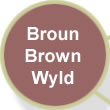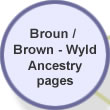
Betty Candy (a lady in Australia with a connection to the Mackellars) cited the following from page 12 of Braidwood Heritage by Netta Ellis of the Braidwood and District Historical Society:
"The property Strathallan was owned by Duncan Mackellar Senior, formerly a captain of merchant ships who first called at Australian ports in 1822. In 1825 he arrived in Sydney in command of the City of Edinburgh. His nephew, Duncan Mackellar Junior, with his wife Janet and children, were immigrant passengers on the ship. Captain Duncan Mackellar after retiring from the sea in 1829 settled with his wife and family on Strathallan and in letters to the Colonial Secretary in 1830 stated that he had £1,000 capital, 1 stone house, 1 wood slab house, several huts, 12 assigned convicts and 2 free servants. One hundred and twenty acres were cleared and the property was stocked with sheep, cattle and horses.
"His nephew Duncan Mackellar Junior also became a settler in the area, receiving a free grant of 1,280 acres on the west bank of the Shoalhaven, 10 miles south west of his uncle's property. In 1828 he was residing in the area with his three small boys, Alexander, John and Duncan Elar. His wife Janet had been murdered earlier in the year at a farm near Camden, while her husband was 'up the country' Janet was buried, an assigned convict was accused, tried, found guilty and hanged before her husband returned.
"The origin and purpose of the Strathallan "barracks" are not clear. The building does not confirm to the style of contemporary government buildings. Perhaps Mackellar with his nephew's tragedy in mind built it as a high security prison or his assigned convict servants and those from other properties awaiting trial. Duncan Mackellar Senior was one of the honorary magistrates for the local area and had a resident policeman to apprehend wrong doers and a scourger to execute his judgements...
"the property had been sold by Duncan Mackellar Senior in 1836 to neighbour John Coghill. Mackellar sailed for Scotland in 1837, where he published in 1839 An Emigrant's Guide to Australia. This little book gives the details of his 8 years experience of farming in the Southern Tablelands of NSW. His nephew Duncan Mackellar Junior died in Sydney in 1838, aged 40, leaving his Braidwood properties, Jinglemoney and Gingamona in trust for his three sons.
"Today the only reminders of Magistrate Duncan Mackellar of Strathallan are Mackellar Streets and Duncan Street in the town, a property occupying some of his land still called Strathallan, and the grey granite ruins on a windswept hillside.
Charlotte Broun and Betty Candy also cited the following from page 34 of a book titled Braidwood, Dear Braidwood written by Netta Ellis in 1989, and I thnk republished in 1997 [ISBN 07316 5589 3]
"Captain Duncan Mackellar
"The most important landowner of the early pastoral era in the Braidwood region was Captain Duncan Mackellar, master of the ship City of Edinburgh. He first called at Sydney in 1822 in command of the ship Clydebank, received a grant of 2000 acres selected in the same year and left the sea in 1829 to settle on his property, Strathalan (sic), with his wife and two children.
"In 1825 his nephew, Duncan Mackellar Junior, had travelled with his wife, Janet and two sons, on his uncle's ship to Sydney and received a grant of 640 acres which he selected ten miles south-west of Strathalan, to the west of the Shoalhaven River in the County of Murray. A third son was born in the colony soon after they arrived and Mackellar Junior settled his family on a farm at Upper Minto, while he went south to establish a home for his family on his grant. In March 1828, while he was absent, his wife was murdered by a deranged assigned servant. Janet was buried, the convict tried, found guilty and hanged before Mackellar returned. A few months later his house was burnt down and the government, perhaps feeling some responsibility for the tragic loss of his wife, granted him another 640 acres. He selected this land in the County of Murray in the vicinity off his original grant Jinglemoney. In the census taken late in 1828 he was residing in the County of St Vincent with his three small sons. Alexander aged 7, John, 5, and Duncan Elar, 2. He had a labour force of eight. Six of them were assigned convicts and two had tickets of leave. It is probable that as his house in the County of Murray had been destroyed, he was resident as overseer on his uncle’s property Strathalan in the County of St Vincent, and the acres listed, 3250. Were an amalgamation of his own 1280 acres and Captain Mackellar’s 2000 acres. Captain Mackellar left the sea in 1829 and during 1829-30 made three applications for a further grant of 560 acres, listing the improvements made to Strathalan.
...."
Charlotte Broun adds:
"Duncan also appears in the Colonial Secretary's Index (a collection of papers of the Colonial Secretary ranging from 1788 to 1825). He is listed as Master of the vessel "City of Edinburgh". There is no transcription of this passenger list available at this time.
"It appears also that Duncan was a magistrate - This was not unusual. In the more remote areas many landholders were given the role of magistrate (my grandmother was a magistrate in the New England District in the early 1900's). Below is his statement from an inquest held into the death of a William Cook on 8 August 1834."
"Duncan McKellar, Esq. - I am a Magistrate of the Colony; in the month of May last, I, as a Magistrate, held an inquest on the body of William Cook, an assigned servant to Dr. Reid; I examined two witnesses, ... "
Christine Wright (nee Ogilvy) who is involved in running the Museum in Braidwood and is President of the Braidwood Historical Society writes:
"There are still people here descended from Duncan Ella Mackellar, I think the youngest son [of Duncan Mackellar jnr]. I have a personal interest in Duncan Mackellar [snr]. When he returned to Edinburgh, he lived in Inverleith Row, two houses from my family... When Duncan Mackellar published his emigrant's guide in 1839 after he returned to Edinburgh, his address was 52 Inverleith Row, Edinburgh... I think it was Mackellar who prompted two young men from my family to come to Australia. (the Ogilvys lived in Inverleith Row) ... I have surmised that Duncan Mackellar encouraged two sons from my family, the Ogilvys who lived at 56 Inverleith Row to emigrate here."
The full title of the book is "The Australian emigrant's guide: or, A few practical observations and directions for the guidance of emigrants proceeding to that colony" published by J. Fletcher in 1839 (ISBN: B0008BZVEQ).
The booklet is mentioned in Scotland and Australia, 1788-1850: Emigration, Commerce and Investment by David Stirling Macmillan, Scotland, 1967:
... another Scottish pamphlet, an Edinburgh publication, that attracted public attention in 1839 was the Guide for Australian Emigrants compiled by Duncan Mackellar of Strathallan. The author had been an 'agriculturalist and grazier' in New South Wales for eight years, after serving as Commander of one of the Australian Company's vessels, and the practical, sober style of the work, with its flashes of extreme optimism, commended it sufficiently to the public for another edition to be justified within the year. By means of carefully drawn up schedules, Mackellar showed how it was possible for a capital of £3,500 invested in sheep to increase within eight years to some £24,000. Possibly the example reflected his own experience, and he certainly extolled the prospects of fortune in the colony.
The 1841 census for the county of Midlothian, Edinburgh St Cuthberts, Inverleith Row, Golden Acre, shows a Margaret MacKellar, Age: 45, with occupation: Ind. There is another Margaret MacKellar, age: 10, and Eliza MacKellar, also age: 10. This corresponds roughly to the names and ages of the youngest children of the marriage of Duncan Mackellar and Margaret Dick, and ties in roughly with the estimated age of his wife. The absence of Duncan was possibly due to his having been on some very long sea voyage at the time. He was certainly alive at the time, as he appears in the 1851 census.
Duncan Mackellar continued ... >
Content copyright © 2006 Alasdair Broun, webmaster and site author, Skye Website Services. All rights reserved.
You are very welcome to quote short excerpts in appropriate contexts, without permission, if you refer to the source by providing links to the relevant pages on my site.
Web design copyright © 2006 Red Kite Internet All rights reserved.





